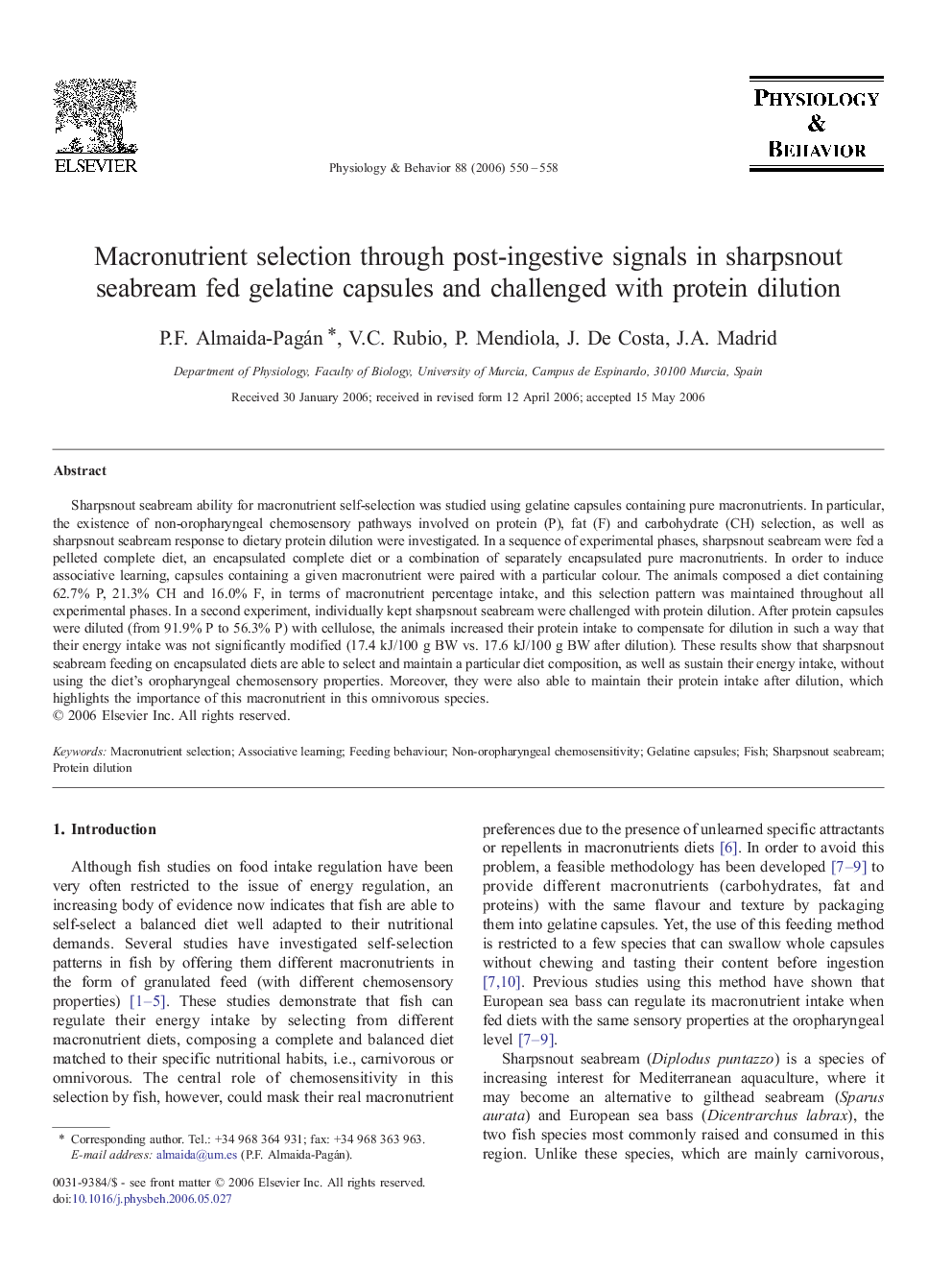| Article ID | Journal | Published Year | Pages | File Type |
|---|---|---|---|---|
| 2846258 | Physiology & Behavior | 2006 | 9 Pages |
Sharpsnout seabream ability for macronutrient self-selection was studied using gelatine capsules containing pure macronutrients. In particular, the existence of non-oropharyngeal chemosensory pathways involved on protein (P), fat (F) and carbohydrate (CH) selection, as well as sharpsnout seabream response to dietary protein dilution were investigated. In a sequence of experimental phases, sharpsnout seabream were fed a pelleted complete diet, an encapsulated complete diet or a combination of separately encapsulated pure macronutrients. In order to induce associative learning, capsules containing a given macronutrient were paired with a particular colour. The animals composed a diet containing 62.7% P, 21.3% CH and 16.0% F, in terms of macronutrient percentage intake, and this selection pattern was maintained throughout all experimental phases. In a second experiment, individually kept sharpsnout seabream were challenged with protein dilution. After protein capsules were diluted (from 91.9% P to 56.3% P) with cellulose, the animals increased their protein intake to compensate for dilution in such a way that their energy intake was not significantly modified (17.4 kJ/100 g BW vs. 17.6 kJ/100 g BW after dilution). These results show that sharpsnout seabream feeding on encapsulated diets are able to select and maintain a particular diet composition, as well as sustain their energy intake, without using the diet's oropharyngeal chemosensory properties. Moreover, they were also able to maintain their protein intake after dilution, which highlights the importance of this macronutrient in this omnivorous species.
